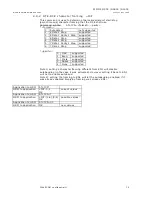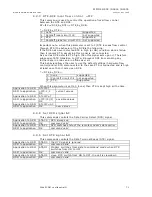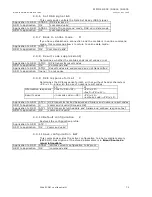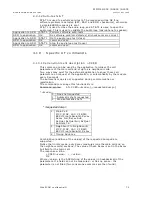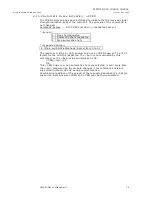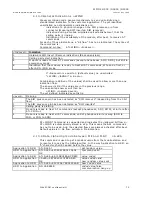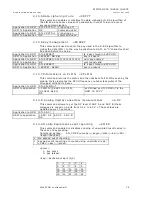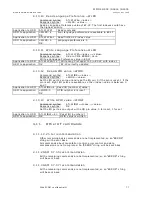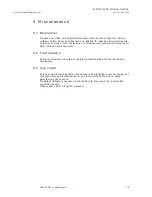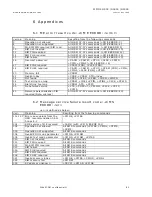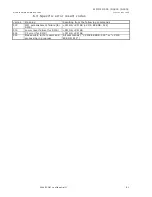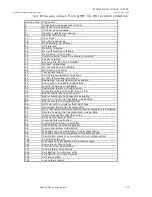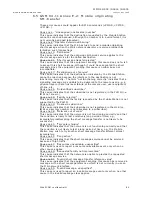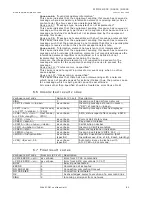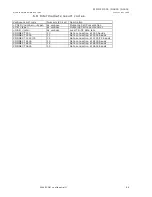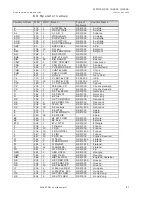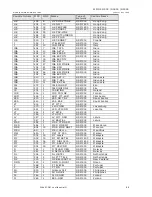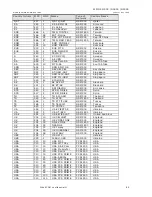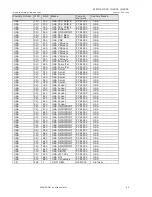
WMO2 G900 / G1800 / G1900
WCOM/GSM/WMO2/WMO2ATDOC
Friday 21 May 1999
WAVECOM confidential ©
84
6.5
GSM 04.11 Annex E-2: Mobile originating
SM-transfer
These error causes could appear for SMS commands (+CMGS, +CMSS,
+CMGD…)
Cause no 1: "Unassigned (unallocated) number"
This cause indicates that the destination requested by the Mobile Station
cannot be reached because, although the number is in a valid format, it is
not currently assigned (allocated).
Cause no 8: "Operator determined barring"
This cause indicates that the MS has tried to send a mobile originating
short message when the MS's network operator or service provider has
forbidden such transactions.
Cause no 10: "Call barred"
This cause indicates that the outgoing call barred service applies to the
short message service for the called destination.
Cause no 21: "Short message transfer rejected"
This cause indicates that the equipment sending this cause does not wish
to accept this short message, although it could have accepted the short
message since the equipment sending this cause is neither busy nor
incompatible.
Cause no 27: "Destination out of service"
This cause indicates that the destination indicated by the Mobile Station
cannot be reached because the interface to the destination is not
functioning correctly. The term "not functioning correctly" indicates that a
signalling message was unable to be delivered to the remote user; e.g., a
physical layer or data link layer failure at the remote user, user equipment
off-line, etc.
Cause no 28: "Unidentified subscriber"
This cause indicates that the subscriber is not registered in the PLMN (i.e.
IMSI not known)
Cause no 29: "Facility rejected"
This cause indicates that the facility requested by the Mobile Station is not
supported by the PLMN.
Cause no 30: "Unknown subscriber"
This cause indicates that the subscriber is not registered in the HLR (i.e.
IMSI or directory number is not allocated to a subscriber).
Cause no 38: "Network out of order"
This cause indicates that the network is not functioning correctly and that
the condition is likely to last a relatively long period of time; e.g.,
immediately reattempting the short message transfer is not likely to be
successful.
Cause no 41: "Temporary failure"
This cause indicates that the network is not functioning correctly and that
the condition is not likely to last a long period of time; e.g., the Mobile
Station may wish to try another short message transfer attempt almost
immediately.
Cause no 42: "Congestion"
This cause indicates that the short message service cannot be serviced
because of high traffic.
Cause no 47: "Resources unavailable, unspecified"
This cause is used to report a resource unavailable event only when no
other cause applies.
Cause no 69: "Requested facility not implemented"
This cause indicates that the network is unable to provide the requested
short message service.
Cause no 81: "Invalid short message transfer reference value"
This cause indicates that the equipment sending this cause has received a
message with a short message reference which is not currently in use on
the MS-network interface.
Cause no 95: "Invalid message, unspecified"
This cause is used to report an invalid message event only when no other
cause in the invalid message class applies.

